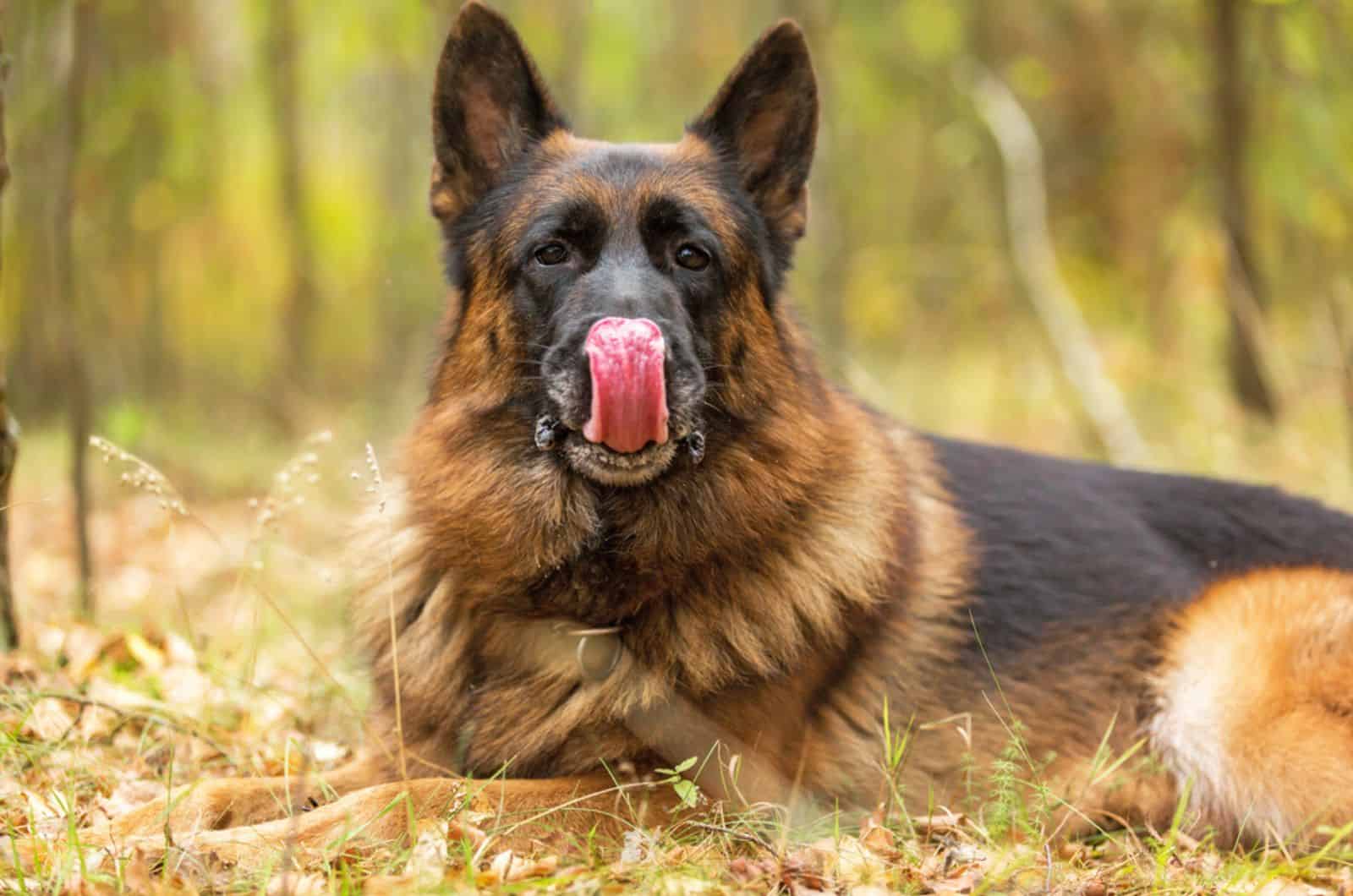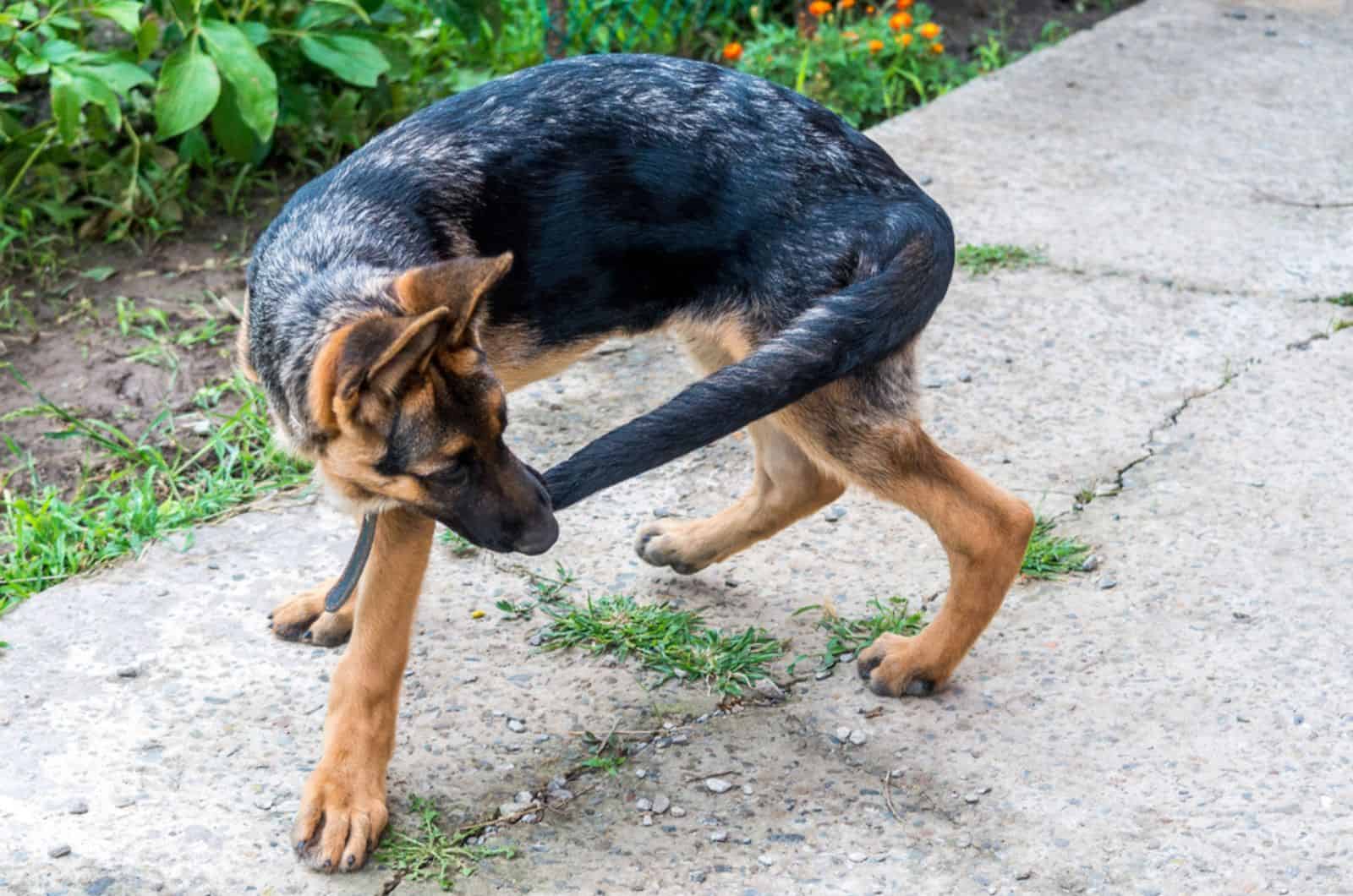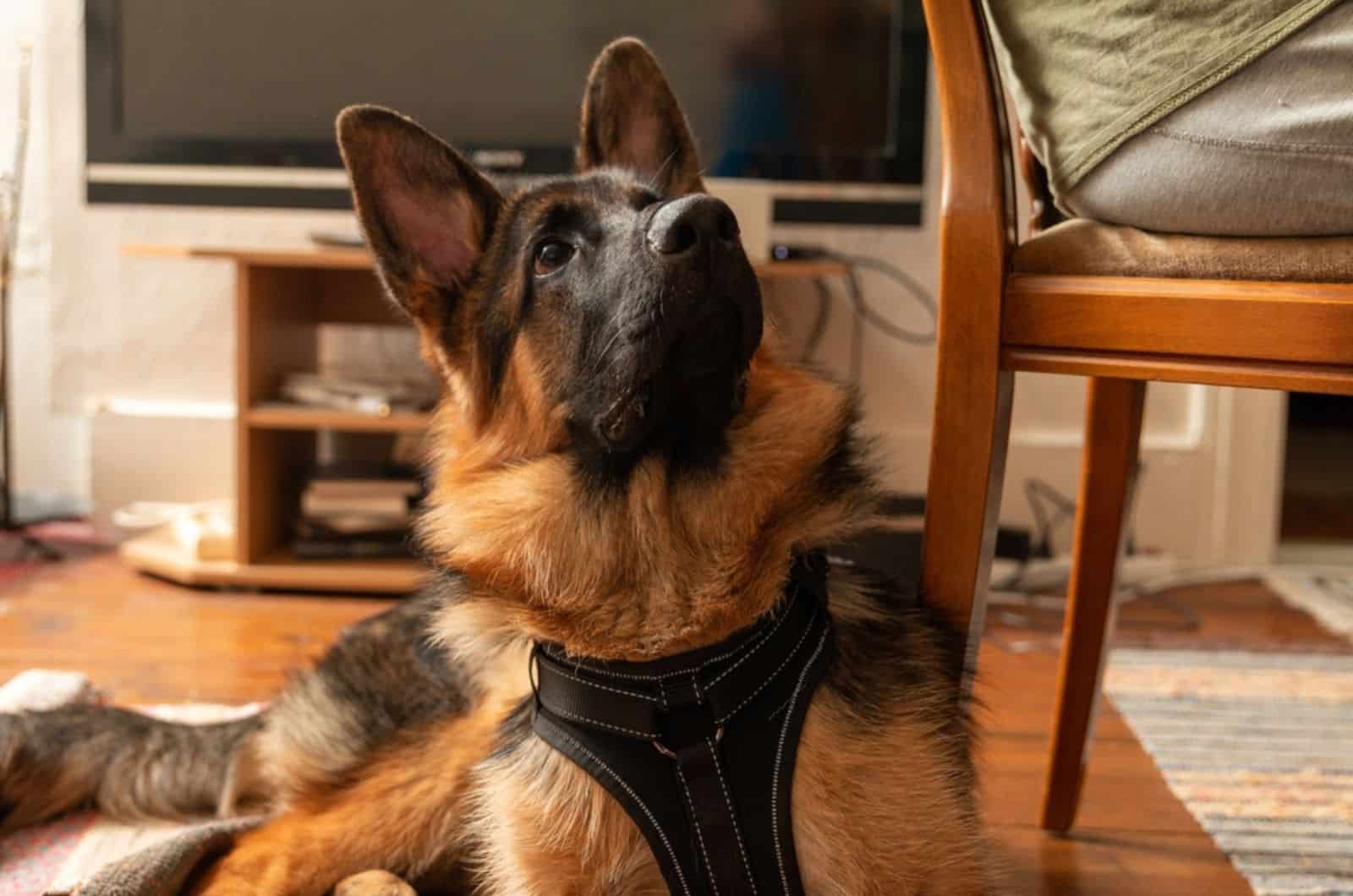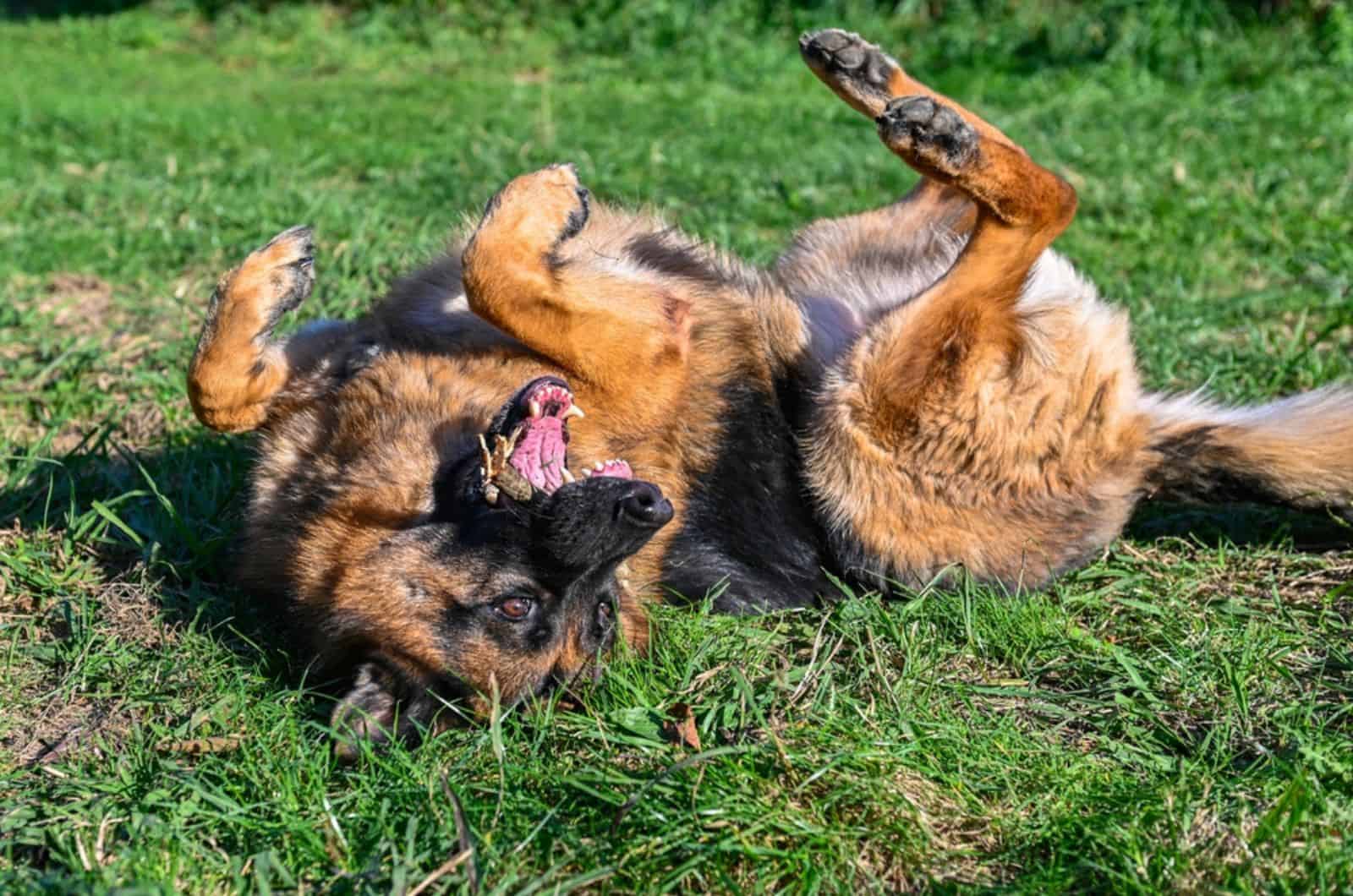The sad truth about man’s best friend is that they can’t communicate with us verbally, but they do have their own way of responding, it’s just something that we need to get used to, but what does the German Shepherd body language look like?
Well the German Shepherd’s body language isn’t all too different from most other dogs, but they do have their own niches.
It’s also a big help to know what your GSD is trying to convey as their training can be one of the most problematic ones to get through and you need every advantage that you can get.
So, if you’re curious about what your German Shepherd dog is trying to tell you and what all the different ways of canine communication are, be sure to read on.
The Types Of German Shepherd Body Language
There are multiple ways that dogs in general use to communicate: the tactile (also known as touch), acoustic, visual, and olfactory (ones reliant on smell).
Tactile Methods Of German Shepherd Communication

Tactile signals, as stated earlier, are ones reliant on touch and they are either done to other dogs or toward other people including you.
Tactile Body Language For Dogs
Those done to dogs are often shows of dominance among other dogs or greeting.
That particular one relies on grabbing the other dog’s muzzle or putting their paws on the back of the other dog to show how he’s below the emoting dog.
Licking other dogs is a similar form of dominance, though in the form of a mother taking care of her kids rather than something more intense.
If the head goes on the shoulder, it’s a more peaceful sign, one more intended as a way of showing interest in the other dog, be it friendly or something more intimate.
Tactile Body Language For Humans
That’s as far as dogs are concerned, as for humans we have a slightly different set of signals.
First, we have a dog licking his lips, often followed by a rather anxious expression. This is often seen during training and a sign that the dog is tired.
Licking you directly is a sign of affection and is done either when your dog seeks companionship or as a way to try and comfort you if he senses you feeling down.
If your dog is pawing at you or the door, it’s a sign that he’s looking for something from you. It’s a form of begging, either to go outside, some food or a little bit of petting.
Your dog can also lean on you, another form of affection and the closest they can do to giving you a hug, though GSDs in particular may do it as a way of showing that you’re their owner, to make it clear to other dogs.
Acoustic Methods Of German Shepherd Communication
Acoustic signs aren’t as varied, but are present nonetheless and are arguably the most important.
The most common one is barking, but the relayed message differs depending on the tone and frequency of the bark.
The more aggressive ones are meant to warn of danger or to alert the person in front of them that they’re trespassing.
The latter can be followed up by growling or entirely done through it too.
Growling is also a sign that someone may be trying to do something that the GSD dislikes like moving close to the dog’s food and a way of telling them to back off.
Howling is next and it’s a form of communication between dogs at night to announce their presence, like a roll call.
Finally, whining is often a sign that there’s something wrong with the dog and he’s trying to get your attention to try and fix it, be it a physical injury or a sign of an illness.
Visual Methods Of German Shepherd Communication

The most varied of the given methods and one that’s split into several different subcategories.
The first one is tied to the tail itself.
Visual Methods Using The Tail
When you see your dog tuck his tail between his legs, it’s often a sign that he has done something bad and feels guilt or is looking for forgiveness.
It can also mean that he’s ashamed of some recent interaction.
If your dog is wagging his tail, it can have a double meaning, be it to show elation or anxiety.
It’s often connected to other forms of body language to get better context out of it.
If the GSD has his tail up high, that means he has spotted something and he’s on alert or that something has upset him and he’s ready to react.
Once again, the meaning is discerned through context and through detecting other forms of body language.
On the other hand, a tail being hung low is a clear sign of relaxation.
RELATED: Understanding 5 German Shepherd Tail Positions
Visual Methods Using The Ears
Next would be ear-related visual signals.
If a dog’s ears are floppy, in GSD terms looking more down and relaxed.
If his ears are going up and down, it’s often a term of endearment.
On the other hand, if they’re going from side to side, it’s a sign that the dog is confused.
Finally, you have the backward and forward tilted ears.
The former relates to a form of fear and is often accompanied by the tail tucked between the dog’s legs.
The latter is more a sign of focus though and is the opposite of the former, airing confidence.
Visual Methods Using The Eyes
Another set of visual signals involves the eyes and they can get pretty varied.
For instance, the usual avoidant eyes are tied to shame and regret. It can also be a sign of submission or a sign that the dog isn’t in the mood for whatever activity you may be trying to initiate.
Then there’s the whole idea of intense staring, one that usually indicates a form of paying attention or just a method of trying to grab your attention. Once again, it depends on the context mixed in with other forms of body language.
When your German Shepherd’s pupils dilate, it’s often a sign of him having poor vision in an area or a potential underlying sight issue, something that should be looked into if it happens too often.
If your dog’s eyes are darting about the room, it’s usually indicative that he’s on alert and doesn’t trust the current levels of safety. You’ll often find dogs showing this prior to earthquakes or when talking to strangers who may pose a threat.
Finally, if he’s blinking often or if he’s squinting his eyes somewhat, it’s your dog trying to grab your attention or that he’s feeling anxious, once again interpreted through further context.
Visual Methods Using The Mouth
The last of the visual cue subcategories is tied to the mouth which can interpret a number of feelings.
Panting is the clearest one and is indicative of exhaustion most likely, though it’s also a means of simply regulating body temperature for dogs as they don’t sweat in the same way as we do.
It can also be a sign of stress or fear, in which case the panting is slower and more labored.
If your dog is yawning, he’s likely showing signs of exhaustion or boredom. An obvious sign, but one that’s still on the list for completion’s sake.
Finally, the shift from an open to closed mouth and vice versa is another sign. While it mostly depends on context, the former is often a sign of your dog focusing while the latter is a sign of sudden excitement.
Miscellaneous Visual Methods
There are a few miscellaneous motions too, ones tied to the fur.
When your dog has his fur raised, often called piloerection, he’s being wary and defensive, like a cat would be when faced with danger.
Excess shedding can also be a sign of stress, but one that’s hard to discern unless you know his regular shedding patterns.
Olfactory Methods Of German Shepherd Communication

The final, and likely the shortest amount of communication variance comes from olfactory methods.
It isn’t anything you’re going to see, but it’s something that your dog will interpret. Him sniffing you, for instance, is a sign of him getting to know you, but also a way for him to tell where you’ve been.
He may change his mood toward you if he sniffs the scent of another dog and he’ll need to assert his claim on you in his own way.
In Conclusion
The German Shepherd body language, as you can see, is very similar to that of other canine breeds, there isn’t much that’s unique there, but you’re likely to see your GSD growling more often than not.
However, as said prior, it’s important to understand what message your dog is trying to relay over to you, particularly a German Shepherd during training so you can respond in kind and build a better relationship between the two of you.
After all, learning how to communicate between one another will be key to making that training stick and to make you two into an inseparable pair.
It may seem like a lot, but it’ll become second nature to you in no time. Until next time, pet parents.
RELATED LINKS:
